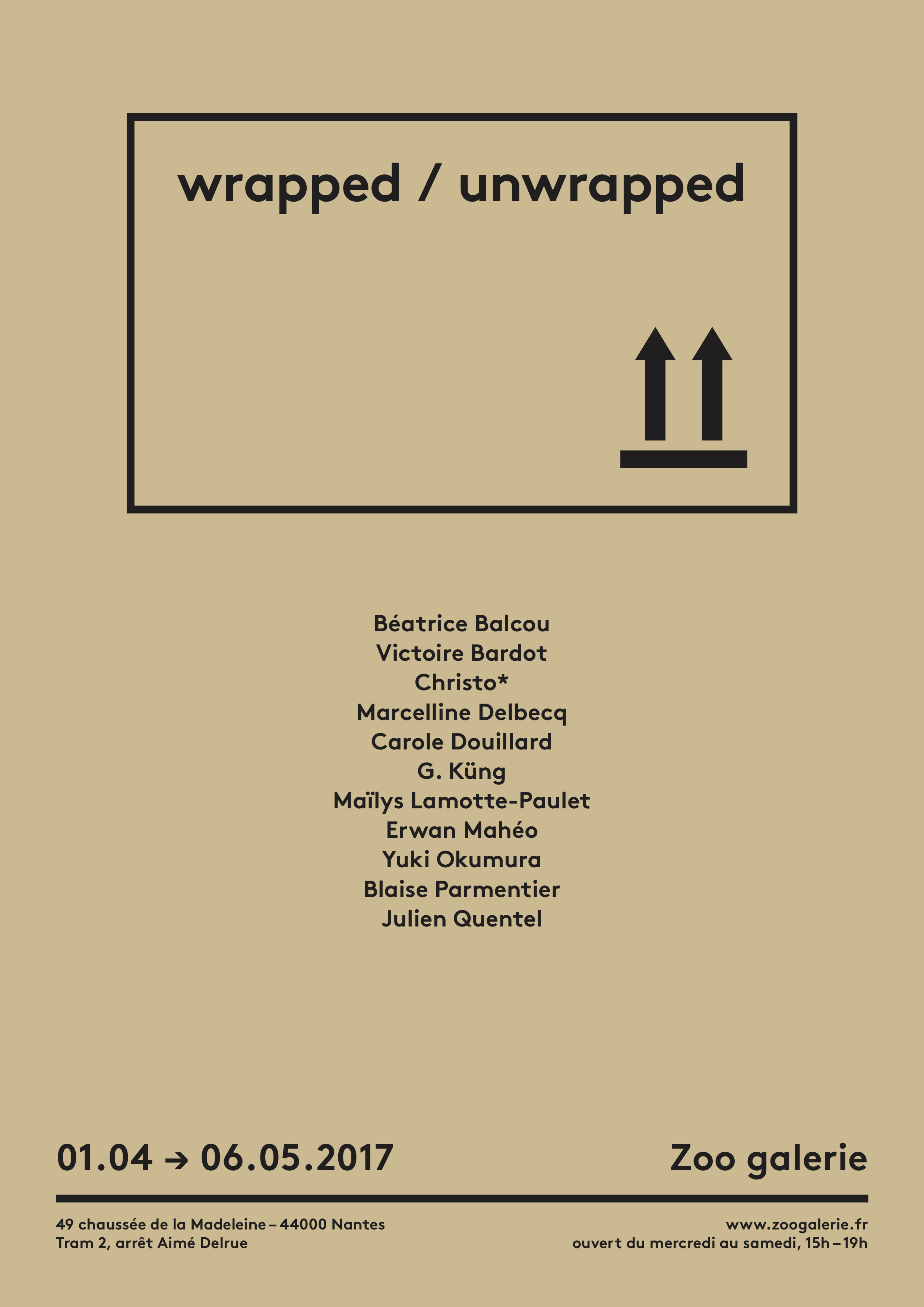Wrapped / Unwrapped
text : Patrice Joly
collective exhibition, zoo galerie, Nantes, 2017
curator : Patrice Joly
What does it really a work of art, when does it appear, what decides its final form? The concerns that animated the promoters of modern sculpture when they sought to define a work, to apprehend its intrinsic reality, its internal determinations, the intentions of the author which more or less show in what is given to see in the end, resurface a century later through the influence of the around works. Not the discourse that surrounds them, justifies them and installs them in their status of work, but, more prosaically, the entire protective envelope that corresponds to an exponential increase in their propensity to circulate and to stagnate. The packaging of the works are not just plain pieces of cardboard or polystyrene protector that keep the work in good condition, preserve it from external shocks in its many travels or keep it in its long storage phases: much more than just a simple material envelope, they have become over time and modifications of the major mode of “being in the world” of the work, its main condition of appearance, since, except for the rare moments where the work is
exposed naked, it is mostly locked in its wooden protective case, bullpack or other cardboard, including when it is the object of a purchase by a collector: it thus returns, externally, in a kind of community formalizing that brings it back to the rank of mainstream material, banal supply from Leroy Merlin or Home Depot … So much so that this packaging that contaminates and colonizes more and more – like the critical discourse and communication – made of more and more work. Because the packaging of works – the one that consists mostly of a provisional that goes on forever – and its diversity of flashy, translucent materials such as light bullpack, 50 shades of gray recycled cardboard used for other purposes Scotches of all widths and colors, likewise form a speech which says almost as much as a press release. Works are adorned as individuals and, increasingly, the distance between the contents and the container can be excessively high; materials without qualities can be kept in luxurious boxes, accentuating the gap between raw materials and the market value of the
work: in fact, it is often the quality of the package that gives the strongest indication of this value. Many artists in the history of art have been interested in these “excrescences” which belong without belonging to the work, which express it without using words and which reveal it by default, like the paratext of literary writings. Great precursors have paved the way: the most famous of them is certainly Christo who, by packing everything goes cans, armchairs, monuments, bridges, mountains, even islands!, Pointed the formidable power of the packaging and what it reveals: by masking these objects larger and larger, more and more improbable, Christo has shown much more than what was discovered until then: the Pont Neuf has suddenly become much more elegant and graceful, it has rounded off and revealed to the Parisians its blooming forms: of course the packaging is a metaphor for clothing and the dialectic of discovery / recovery that it induces is not without summoning the language of desire, what Christo perfectly understood.
Today, many artists are interested in these forms, all the paraphernalia of packaging, because similar to the work they contain and protect, these materials are seductive: they belong to the same material continuum and, in addition to the erotic connotations of packaging and unpacking (the other name of the stripping?) which greatly contribute to this fetishization, they testify to the belonging of the works to the great globalized art market and to the unprecedented acceleration of the circulation of works: the Walead Beshty’s Fedex boxes no longer refer to the work of the worker, as a kind of sublimation of the industrial aesthetic, they testify to the disintegration of a world, that of the industry in the heart of Western cities, its relocation to the other end of the planet and therefore the eminently nomadic status of the commodity; In addition, the abrasions and bruises that the parcel undergoes during this invisible journey do not fail to evoke the real wounds and traumas that suffer the migrated travelers who are the migrants.
